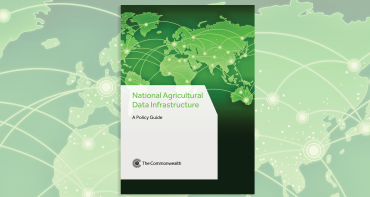Annual transfers of money by foreign migrant workers to their home countries play a huge role in many countries. These remittances provide income support for family members back home and, in some cases, provide funding for start-ups. Remittances are also a source of foreign exchange reserves for developing countries and they help contain trade balances and widen the revenue base through increased consumption

Annual transfers of money by foreign migrant workers to their home countries play a huge role in many countries. These remittances provide income support for family members back home and, in some cases, provide funding for start-ups. Remittances are also a source of foreign exchange reserves for developing countries, and help contain trade balances and widen the revenue base through increased consumption
As migration to developed countries increased and technologies advanced, remittances have been steadily increasing. By the turn of the century, remittances had doubled to US$102 billion in the year 2000 from a paltry US$47 billion in 1980.
With the COVID-19 pandemic wreaking havoc in many economies the global economic outlook is dire with predictions suggesting remittances will decline. The World Bank predicted a 20 percent decline in remittances for 2020 stemming from a combination of declining global economic growth, plummeting oil prices, and the loss of millions of jobs.
While some countries have registered a decline in remittances in the wake of the pandemic, in a few countries, remittances are proving to be resilient, defying all expectations. This begs the question as to how some countries are able to keep remittances flowing and warrants further introspection.
Cost of COVID-19
With businesses struggling to keep afloat during the pandemic, 305 million jobs were erased to the tune of US$3.5 trillion in global income. As such, remittances were expected to decline to US$572 billion in 2020 following a record high of US$714 billion registered in 2019.
Why should policymakers be concerned? For starters, often lauded as being less prone to fraud and corruption, remittances provide a valuable source of financing for development to help meet financing shortfalls. The projected decline in remittances could put stress on governments' public finances from decreased revenue.
Remittances' losses will also likely exert pressure on countries' external payment needs for imports and foreign debt service. Lastly, declining remittances also pose a threat to recipients' ability to meet basic needs such as school fees, rent, and medical fees.
The remittances puzzle
While some countries are experiencing decreased inflows of remittances, a few countries, like Pakistan, Bangladesh and Jamaica have registered increased remittances in 2020, defying analyst predictions.
In Pakistan, remittances increased by 36.5 percent in July, marking a record high when compared to the same period in previous years. This surge in remittances has been attributed mostly to less spending on Hajj pilgrimages to Mecca that followed from the travel restrictions inflicted by the pandemic.
Between July and September, Bangladesh registered a record high in remittances amidst the global pandemic. Analysts suggested this could be due to the diversion of remittances from informal to formal means as a consequence of decreased travel back home, which made it difficult to carry money back home.
The path taken by remittances in Jamaica echoes that experienced during the global financial crisis where remittances initially declined but eventually increased. The remittances picked up as migrant workers obtained government support in their host countries which enabled them to continue sending money back home.
The situation in these countries alludes to other factors that ultimately determine the flow of remittances. First, could be the fact some migrant workers were able to maintain their employment during the pandemic due to them being employed in essential vocations such as nursing and care work.
Secondly, for those migrants that lost their jobs, some were eligible for income support measures such as the furlough schemes adopted by countries like the United Kingdom. Lastly, the decline in economic activity and employment in home countries could have spurred the rise in remittances, as was seen in Mexico, where migrants in the United States were motivated to help out more in the face of adversity.
How to keep remittances rolling
For those countries facing decreased remittances, immediate policy action is needed to keep remittances flowing. International financial institutions, including the World Bank, drew up a call to action, which provided guidelines for money service providers, regulators, and national governments. It urges governments to:
- Declare the provision of remittances as an essential financial service;
- Establish economic support measures that will benefit migrants and remittance service providers; and
- Support the development and scaling up of digital remittance channels for migrants and families.
Tax credit schemes could also be provided, as was done during the global financial crisis, to resuscitate remittances. Countries must also strive to scale up fintech and digital technology modes for remitting funds through providing adequate supportive infrastructure and devising conducive regulatory policies. Lastly, strong institutional frameworks are also needed to foster transparency and accountability.
Taking action
As the COVID-19 pandemic continues to lay waste to many economies, remittances could prove vital in helping countries rebuild their economies. Further research on the determinants of remittances is needed to draw up evidence-based policy solutions.
The Commonwealth is committed to helping member states to benefit from remittances and plans to roll out a Diaspora Investment project aimed at facilitating remittances and investments from the Commonwealth diaspora.


